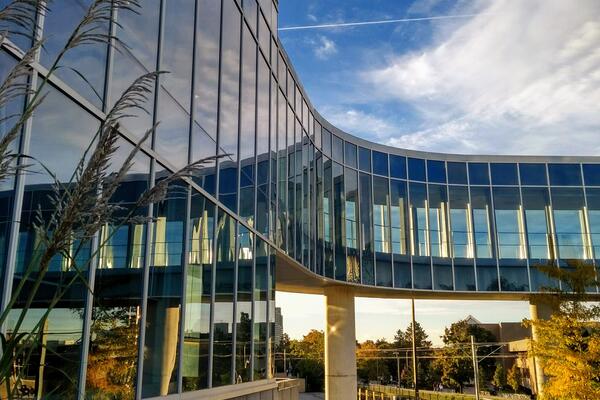
University of Waterloo to build new, 500-bed residence prioritizing Indigenous design principles
Groundbreaking for the new building is slated for July 2024, pending approvals

Groundbreaking for the new building is slated for July 2024, pending approvals
By Media RelationsThe University of Waterloo will build a new, 500-bed residence building on its main campus planned to open in 2027.
In collaboration with Indigenous-owned architecture firm Two Row, and alongside the Office of Indigenous Relations at the University of Waterloo, the building team is taking a design approach that prioritizes Indigenous engagement and principles.
The building will feature a community healing garden to allow for the cultivation of sacred and traditional medicine plants. It will also be home to gathering spaces equipped for smudging, a cleansing ceremony.
"I'm very proud that the university is incorporating our commitment to reconciliation in the design of this new space. It's vital to actively seek out opportunities to move forward together with Indigenous communities in every step we take as a university, and the spaces where our students will live is a good and important example of how we can do that," said Vivek Goel, President, and Vice-Chancellor of the University of Waterloo. "This investment is also a key contribution to continuing to grow the Region's housing capacity, which is especially significant in light of the ongoing challenge of availability in our community and across the country."

Drawing of the atrium seating area.
The building will also include improved accessibility with multiple accessible room options and increased connectivity to main campus buildings through bridges and ground-level access. There will be dedicated counselling, wellness and sensory spaces, and washrooms will be available to all genders – reflecting the university's commitment to inclusiveness and well-being.
Sustainability will also be top-of-mind, with the use of recycled building materials and air source heat pumps – a low-carbon heating system. The building is being designed to be net-neutral, and the recommended location for the building on the northeast side of parking lot A creates opportunities to explore alternative energy sources, further supporting the university's net zero carbon targets.
"We know that students who live in residence, particularly during their first year of study, achieve higher rates of retention and graduation, high GPAs and a strong sense of belonging, community engagement and personal wellness," said Chris Read, Associate Provost, Students. "This is why we want to ensure that as many students as possible who want to live on campus can, and that when they do, they have thoughtful, sustainable options which prioritize their well-being."
The new residence will be purpose-built for mixed-year accommodation. This approach to campus housing, already popular in the United States, features traditional dorm-style accommodations for first-year students but also incorporates more private and independent living options for upper-year students.
"The mixed-year model is beneficial for both first-year and upper-year students," said Read. "First-year students gain access to mentors in upper-years who can help them integrate into campus communities, and upper-year students gain access to a desirable, on-campus housing experience and leadership opportunities."
The new build is one piece of the university's Campus Housing Facilities Strategy - a long-term plan to inform the revitalization of Campus Housing facilities. It includes new beds, but also calls for the revitalization of current buildings, which are aging, not environmentally sustainable and present barriers to accessibility.
The plan was developed by the teams in Campus Housing and Plant Operations and is based on multiple assessments of the condition and performance of existing buildings, stakeholder workshops, financial development, extensive engagement with student leaders, Campus Housing staff, Plant Operations staff and a wide range of other university stakeholders.
"We've been working to lay out a comprehensive plan which will ensure that housing on campus provides our students with a supportive environment that fosters community and academic success," said Glen Weppler, Director of Housing at Waterloo. "We have that plan now, and I'm thrilled that our leaders are prioritizing this work by supporting the construction of this new building, part of the first phase of this multi-year project."
Waterloo is working with Diamond Schmitt architects and will break ground on the new building in July 2024, pending the approval of the final stages of the project plan by the University of Waterloo's Board of Governors and Regional and Municipal partners.

Read more
Here are the people and events behind some of this year’s most compelling Waterloo stories

Read more
A closer look at the University of Waterloo’s beloved network of pedestrian tunnels and bridges

Read more
A winter holiday message from President Vivek Goel
The University of Waterloo acknowledges that much of our work takes place on the traditional territory of the Neutral, Anishinaabeg, and Haudenosaunee peoples. Our main campus is situated on the Haldimand Tract, the land granted to the Six Nations that includes six miles on each side of the Grand River. Our active work toward reconciliation takes place across our campuses through research, learning, teaching, and community building, and is co-ordinated within the Office of Indigenous Relations.